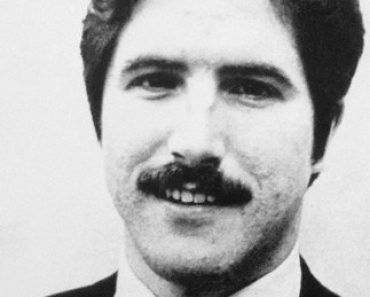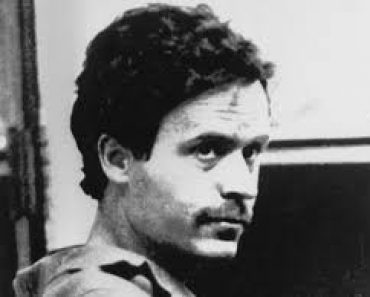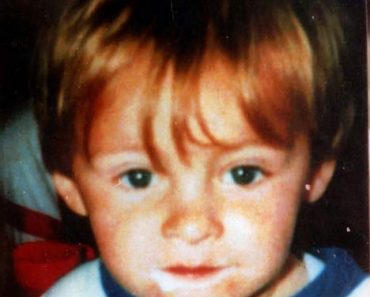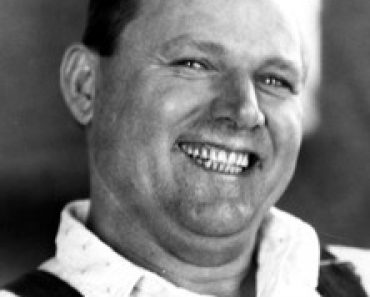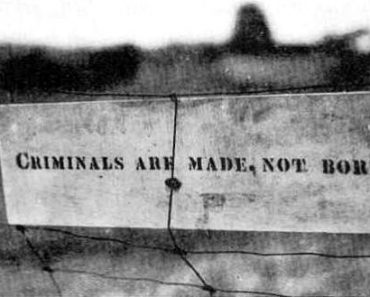 Ronald Gene Simmons was a retired Air Force Sergeant. Over the Christmas holidays in 1987, he methodically executed 14 members of his family: 6 daughters, 3 sons, 2 grandsons, 1 son-in-law, 1 daughter-in-law and his wife. (One of his daughters was also his granddaughter). Two days later, he went into town and killed two others.
Ronald Gene Simmons was a retired Air Force Sergeant. Over the Christmas holidays in 1987, he methodically executed 14 members of his family: 6 daughters, 3 sons, 2 grandsons, 1 son-in-law, 1 daughter-in-law and his wife. (One of his daughters was also his granddaughter). Two days later, he went into town and killed two others.
On December 22, 1987, Ronald Gene Simmons began a killing spree that would be the worst mass murder in Arkansas history and the worst crime involving one family in the history of the country. His rampage ended on December 28, 1987, leaving fourteen members of his immediate family dead and two former coworkers slaughtered.
Who Is Ronald Gene Simmons
Ronald Gene Simmons was born on July 15, 1940, in Chicago, Illinois, to Loretta and William Simmons. On January 31, 1943, William Simmons died of a stroke. Within a year, Simmons’s mother married again, this time to William D. Griffen, a civil engineer for the U.S. Army Corps of Engineers. The corps moved Griffen to Little Rock in 1946, the first of several transfers that would take the family across central Arkansas over the next decade.
On September 15, 1957, Ronald Gene Simmons dropped out of school and joined the U.S. Navy. His first station was Bremerton Naval Base in Washington, where he met Bersabe Rebecca “Becky” Ulibarri, whom he married in New Mexico on July 9, 1960.
Over the next eighteen years, the couple had seven children. In 1963, Simmons left the navy and approximately two years later, he joined the air force. During his twenty-two-year military career, Simmons was awarded a Bronze Star, the Republic of Vietnam Cross for his service as an airman, and the Air Force Ribbon for excellent marksmanship. Ronald Gene Simmons retired on November 30, 1979, at the rank of master sergeant.
Allegations of Incest
On April 3, 1981, Simmons was being investigated by the Cloudcroft, New Mexico, Department of Human Services for allegations that he had fathered a child with his seventeen-year-old daughter, Sheila. Fearing arrest, Simmons fled first to Ward (Lonoke County) in late 1981 and then to Dover (Pope County) in the summer of 1983. The family took up residence on a thirteen-acre tract of land that would become known as “Mockingbird Hill.”
The residence was constructed of two older-model mobile homes joined to form one large home and was surrounded by a makeshift privacy fence, as high as ten feet tall in some places. The home did not have a telephone or indoor plumbing.
Simmons worked a string of low-paying jobs in the nearby town of Russellville. He quit a position as an accounts receivable clerk at Woodline Motor Freight after numerous reports of inappropriate sexual advances. He went to work at a Sinclair Mini Mart for approximately a year and a half before quitting on December 18, 1987.
The Murder Spree of Ronald Gene Simmons
Evidence indicates that Ronald Gene Simmons bludgeoned and shot his wife on December 22, 1987. Simmons also bludgeoned and shot his visiting son, twenty-nine-year-old Ronald Gene Simmons Jr. He then strangled his three-year-old granddaughter. All three bodies were later found in a shallow pit Simmons had instructed the children to dig months before for a third family outhouse.
Later the same day, the Dover school bus dropped off the younger Simmons children for their Christmas break from school. Based on crime scene investigation, it is believed the Simmons children (ages seventeen, fourteen, eleven, and eight) were separated and killed individually, by strangulation and/or drowning in a rain barrel. Their bodies, too, were found in the hole for the outhouse.
The older Simmons children had been invited to the Simmons home on December 26, 1987, for an after-Christmas dinner. Twenty-three-year-old William H. Simmons II, his twenty-one-year-old wife, Renata May Simmons, and their twenty-month-old son, all of Fordyce (Dallas County), were likely the first to arrive. William and Renata were shot, and their bodies were left by the dining room table, and covered with their own coats and some bedding. The child was killed and placed into the trunk of a car behind the Simmons home.
The Next To Arrive
Next to arrive were Simmons’s twenty-four-year-old daughter, Sheila, and her husband, thirty-three-year-old Dennis Raymond McNulty, as well as their children, seven-year-old Sylvia (the daughter of Sheila and her father) and twenty-one-month-old Michael. Sheila was shot, and her body was laid on the dining room table and covered with a tablecloth. Simmons shot Dennis and strangled Sylvia. Michael was strangled and placed into the trunk of yet another parked car.
Later this same day, Ronald Gene Simmons drove to Russellville, where he stopped at a Sears store and picked up Christmas gifts that had been ordered but had not made it in before the holiday. Later that night, he drove to a private club in Russellville. Then he went home and waited out the weekend.
On Monday, December 28, 1987, Simmons drove a car that had belonged to his son, Ronald Jr., to Russellville. He purchased a second gun from Wal-Mart. His next stop was the Peel, Eddy and Gibbons Law Firm. After entering the building, Simmons shot and killed receptionist/secretary Kathy Cribbins Kendrick.
He next went to the Taylor Oil Company, where he shot and wounded Russell “Rusty” Taylor, the owner of the Sinclair Mini Mart where he had worked, and then shot and killed J. D. (Jim) Chaffin, a fireman and part-time truck driver for Taylor Oil. Simmons shot at and missed another employee before exiting the building.
It’s All Over Now
Simmons then went to the Sinclair Mini Mart, where he shot and wounded Roberta Woolery and David Salyer. His last stop was the Woodline Motor Freight company. Simmons located his former supervisor, Joyce Butts, and wounded her in the head and chest.
 He then took worker Vicky Jackson at gunpoint into the computer office and advised her to phone the police. Simmons allegedly told Jackson: “I’ve come to do what I wanted to do. It’s all over now. I’ve gotten everybody who wanted to hurt me.”
He then took worker Vicky Jackson at gunpoint into the computer office and advised her to phone the police. Simmons allegedly told Jackson: “I’ve come to do what I wanted to do. It’s all over now. I’ve gotten everybody who wanted to hurt me.”
Ronald Gene Simmons surrendered to Russellville police, without incident, when they arrived.
Ronald Gene Simmons Found Sane
Simmons was sent to the Arkansas State Hospital in Little Rock for a competency evaluation by staff psychiatrist Dr. Irving Kuo. Kuo found Simmons to be sane and capable of standing trial. Public defenders Robert G. “Doc” Irwin and John Harris were appointed to represent Simmons. The prosecuting attorney was John Bynum. Jury selection for the first trial took less than six hours.
Simmons was convicted on May 12, 1988, in the Franklin County Circuit Court for the deaths of Kendrick and Chaffin. On May 16 Judge John Samuel Patterson sentenced Simmons to death by lethal injection plus 147 years. Simmons refused all rights to appeal.
Ronald Gene Simmons was found guilty of fourteen counts of capital murder in the deaths of his family members on February 10, 1989, in the Johnson County Circuit Court, with Judge Patterson presiding. Bynum offered a possible motive when he presented an undated note that was discovered in a safe deposit box at a Russellville bank after Simmons’s arrest. The letter seemed to indicate a strong love/hate relationship between Simmons and his daughter Sheila.
Ronald Gene Simmons Waives All Rights To Appeal
After the judge ruled the letter admissible, Simmons lashed out at Bynum, punching him the face, and then unsuccessfully struggled for a deputy’s handgun. Officers rushed him out of the courtroom in chains. Simmons was sentenced to death by lethal injection on March 16, 1989. He again waived all rights to appeal.
On March 1, 1989, Simmons was found competent to waive his rights to appeal his conviction. However the filing of Whitmore v. Arkansas challenged this right. Reverend Louis Franz and Jonas Whitmore contended that Simmons using his right to refuse appeal in fact jeopardized the appellate rights of other death row inmates.
By 7–2 vote, the Supreme Court justices threw out this appeal; however, the ongoing legal proceedings had prevented the execution of Simmons from being carried out. Simmons was watching television and eating what he thought would be his last meal when the news of his stay of execution was announced.
On May 31, 1990, Governor Bill Clinton signed Simmons’s second execution warrant for June 25, 1990. This was the quickest sentence-to-execution-to-death time in United States history since the death penalty was reinstated in 1976. Simmons refused all visitors, including legal counsel and clergy. His last words were: “Justice delayed finally be done is justifiable homicide.” No family members claimed the body, so Simmons was buried in a paupers’ plot at Lincoln Memorial Lawn in Varner.
RELATED: NATASHA CORNETT – NEW ORLEANS VIA MASS MURDER ALONG THE WAY
credit murderpedia / Angela Swanlund – Magazine, Arkansas







